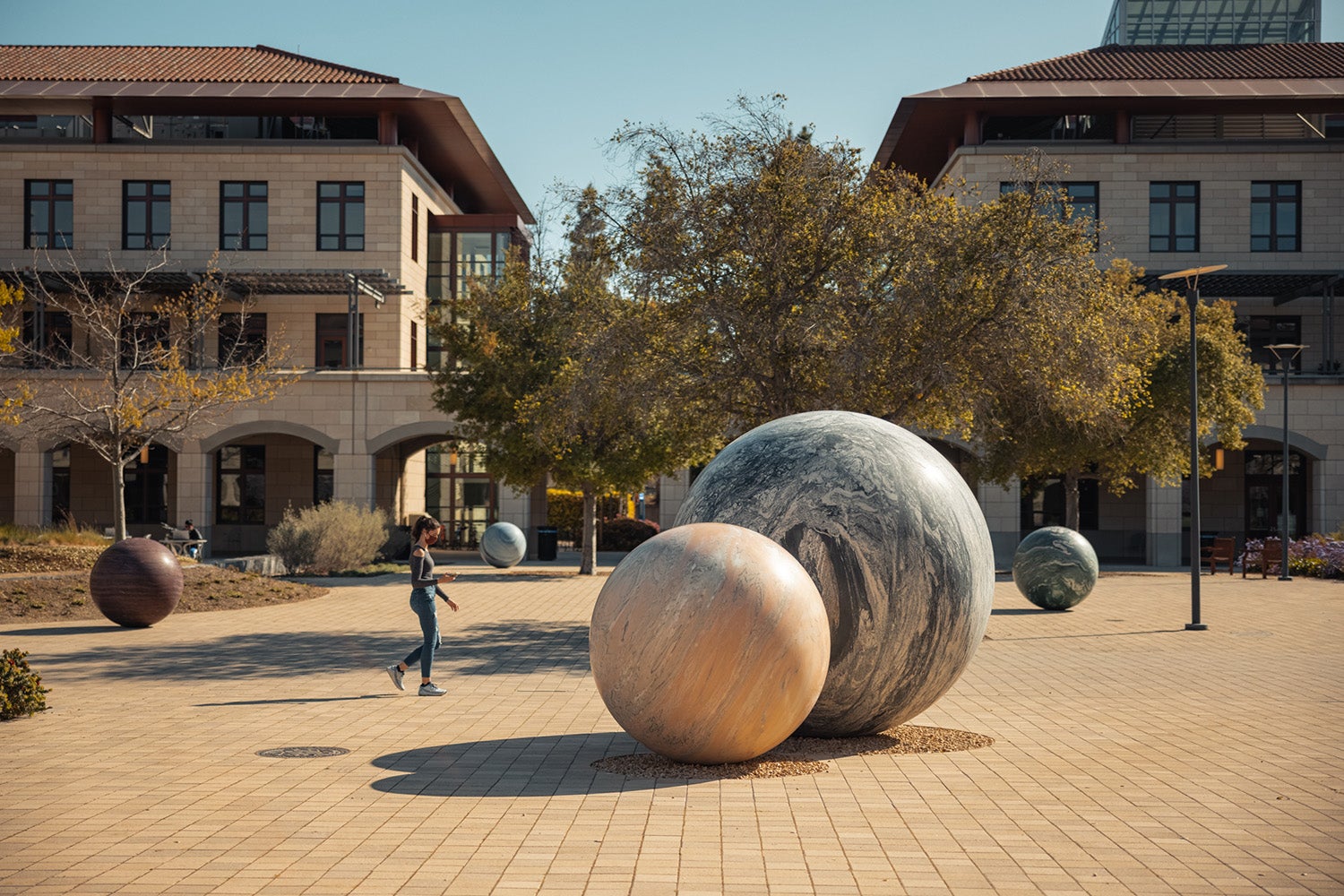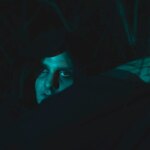
Twelve dazzling stone spheres, ranging in size from a diminutive 16 inches to a colossal 98 inches, are a surprising and provocative addition to the Science and Engineering Quad. International artist Alicja Kwade created the site-specific outdoor work, titled Pars pro Toto, which was installed earlier this month.
Go to the web site to view the video.
Anda sedang menonton: A new installation brings playful and thought-provoking public art to the Science and Engineering Quad | Stanford Report
Sited between the octagonal Jen-Hsun Huang Engineering Center at one end of the quad and a double row of poker-straight palm trees on the other end, the spheres of stones sourced from eight different countries give the quad the feeling of a giant play space scattered with marbles, pick-up-sticks and building blocks. In fact, the artist determined the positioning of the stones by throwing tiny spheres onto a model of the quad to see where they would land.
The highly collaborative process of selecting the work was launched by Jennifer Widom, the Frederick Emmons Terman Dean of the School of Engineering, who asked Laura Breyfogle, then the School of Engineering’s senior associate dean for external relations, to establish an ad hoc committee of faculty, staff and students from throughout the university to select the artwork. Like other recent public art projects on campus that have been underwritten by private donors, Pars pro Toto was funded by a Stanford alumni family who are long-loyal supporters of the university.
Lihat selengkapnya : Snaptube APK V7.29 [2024]- Best Video Downloading APP
“I’m thrilled that we’ve been able to bring Pars pro Toto to Stanford, and I’m truly grateful to the many people who helped make this exciting project a reality,” said Widom. “As students, faculty, staff and visitors return to campus over the coming months, they’re going to find a Science and Engineering Quad that’s been transformed.
“One of the things I find particularly exciting about this work is how it inspires each person to bring to it their own interpretation, their own way of interacting with it. I greatly look forward to walking through the SEQ every day, watching people approach and enjoy our wonderful new art piece.”
Altering the Stanford landscape
Matthew Tiews, interim senior associate vice president for the arts, associate vice president for campus engagement and chair of the university’s Public Art Committee, which helped support this project, said he is excited about Pars pro Toto’s connections to science and the natural world. In particular, he said, he was pleased to see the deep engagement with geology that has come forward from Donald R. Lowe, the Max Steineke Professor in Earth Sciences at the School of Earth, Energy & Environmental Sciences. “The artwork animates the entire SEQ, which looks and feels very different than the one we remember from before the pandemic,” said Tiews.
Sophia Pink, BS ’19, MS ’20, who was a student member of the artwork selection committee, said of Pars pro Toto: “I love this piece because it breaks us out of our day-to-day preoccupations. It reminds us that we’re a small part of a large world, and that randomness plays a part in everything.”
Ann Tanaka, BS ’19, another member of the selection committee that chose Pars pro Toto, believes in the importance of bringing art into the SEQ. “The Stanford arts map shows public art distributed relatively evenly across campus, except for the Science and Engineering Quad,” she said. “Art and engineering aren’t inherently disparate disciplines. Both are highly creative and often driven by curiosity, so the two don’t have to be segmented off to separate corners of campus, physically and intellectually. I hope that the opportunity for Stanford engineers to interact and engage with beautiful artwork on the way to class or lab sparks dialogue or inspires new ideas and thinking.”
Lihat selengkapnya : YouTube Biru APK v19.25.41 Unduh Gratis, Nikmati Nonton Bebas Iklan!
The Science and Engineering Quad is located in Stanford’s Academic Campus Zone, which is currently restricted to students, faculty, staff and postdoctoral scholars approved to be on campus. The zones program is temporary and the university looks forward to lifting restrictions in accordance with state and local public health orders as pandemic conditions improve.
Space, time, science and philosophy
Alicja Kwade was born in 1979 in what was then communist Poland and escaped with her family to West Germany when she was 8 years old. Kwade went on to study at the Berlin University of the Arts. Her experience on both sides of the Berlin Wall deeply informs her investigations into the structures of our reality and the role of perception in society. Her diverse practice is based around concepts of space, time, science and philosophy, and takes shape in sculptural objects, public installations, video and photography.
Kwade’s work has been exhibited nationally and internationally, including at the Metropolitan Museum of Art, New York; the Venice Biennale; The Bass museum of contemporary art in Miami; MIT List Visual Arts Center, Cambridge; Yuz Museum Shanghai; and Whitechapel Gallery, London.
Reflecting on the creation of Pars pro Toto for the Stanford campus, and specifically for the Science and Engineering Quad, Kwade said, “The work is a threefold reflection: It allows us to become giants roaming a human-scale solar system, but it also reminds us to be dwarfed by the ever-expanding universe. We become aware that our Earth is but a minute sphere, a marble suspended in our geocentric horizon. Right here, right now on campus we reflect these opposing realities through the experience of Pars pro Toto.”
Sumber: https://indirmedenizle.org
Kategori: Blog


